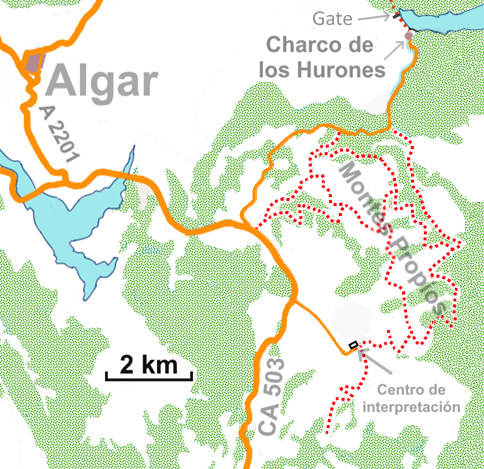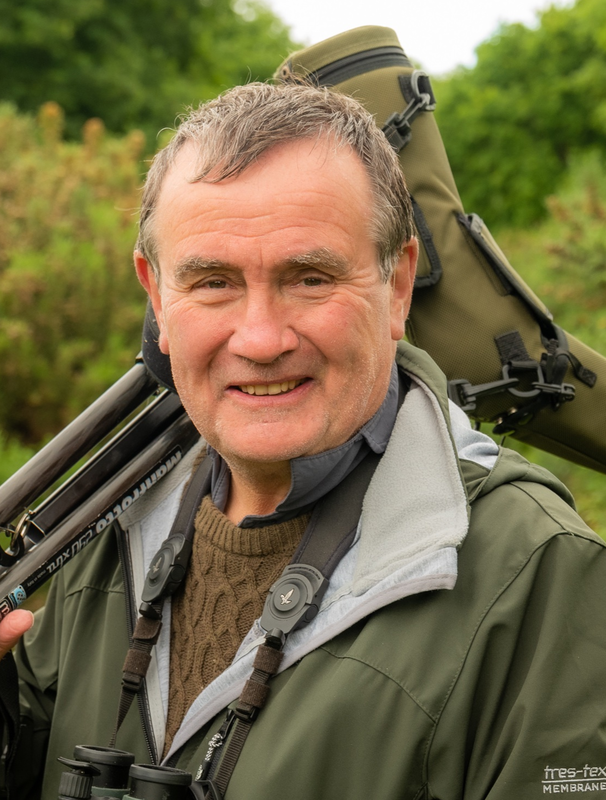
|
The city of Jerez de la Frontera sits a low hill surrounded by rolling farmlands covered with cereals, sunflowers and, of course, vineyards. Understandably, this rich farmland forms the core of the municipality but, as the map shows, there’s a 20 km long administrative tombolo (at one point little more than 100m wide) that links the principal part of the municipality to an ‘island’ wooded hills and modest mountains (with peaks of c400-c500m), the Montes Propios. There must be some reason for this odd arrangement but it’s hard to see what this could be since the connecting filament of land doesn’t follow a road, stream or link to a village. My only thought is that it may be to protect the headwaters of the Embalse del Guadalcacin which presumably supplies the city with water. However, this explanation can hardly apply to the entirely detached “fingernail” of municipal land (c5km x 1 km) near Algar which seems to contain but a single small farm so perhaps other factors are at work.  Whatever the logic of this arrangement, it seems that the municipal authorities have decided to embrace this area, part of the Parque Natural Los Alcornocales, as a valuable ‘green lung’ for the city’s population. With rocky crags, dense cork-oak woodland and cistus clad hillsides the area is certainly very different to and much wilder than the rest of the municipality’s rural areas. Presumably it’s for this reason that the area has an Education centre (Centro de interpretación Montes Propios) here. Similarly, it probably explains the relatively dense network of footpaths (including several, circular routes) in the area. (More details of these footpaths may be found at Senda Cadiz Senderismo). Note that the starting point of some of these senderos does not seem clearly marked. It was only when I read about the Casa de Torres trail in the “Birdwatching Calendar of the Province of Cadiz” (see an earlier blog) that I realised that the road down to the Centro de Interpretation was open to the public rather than private as I’d always assumed. My confusion stemmed from the road being flanked by a wall topped by two lanterns which made it resemble the route up to a private finca. So, when I visited the area this September, I made sure that I visited the site. I didn’t have time to explore the various senderos but I saw enough to appreciate that this site offered an excellent opportunity to explore a part of the Alcornocales on foot. I've found Iberian Green Woodpecker, Bonelli's Eagle & Iberian Chiffchaff in the wider area but I'm sure that there's more to find here.
0 Comments
Leave a Reply. |
About me ...Hi I'm John Cantelo. I've been birding seriously since the 1960s when I met up with some like minded folks (all of us are still birding!) at Taunton's School in Southampton. I have lived in Kent , where I taught History and Sociology, since the late 1970s. In that time I've served on the committees of both my local RSPB group and the county ornithological society (KOS). I have also worked as a part-time field teacher for the RSPB at Dungeness. Having retired I now spend as much time as possible in Alcala de los Gazules in SW Spain. When I'm not birding I edit books for the Crossbill Guides series. CategoriesArchives
May 2023
|


 RSS Feed
RSS Feed
